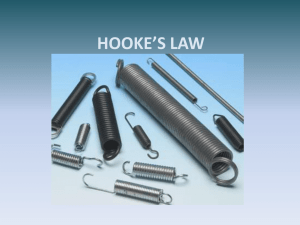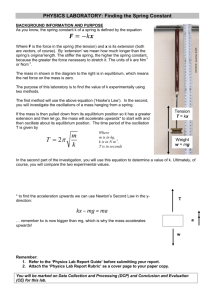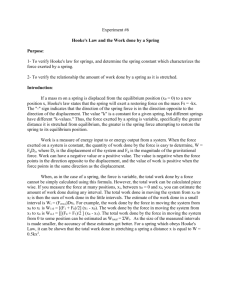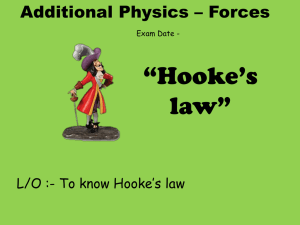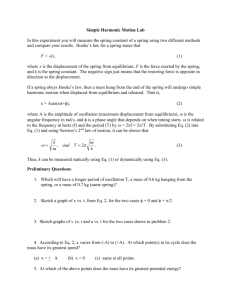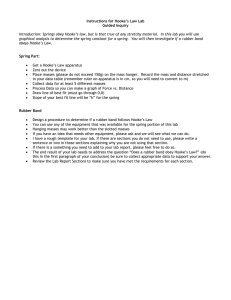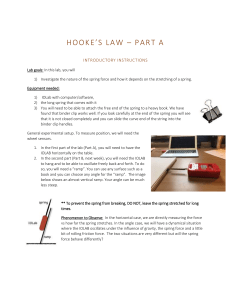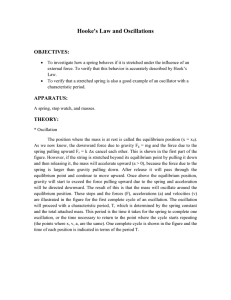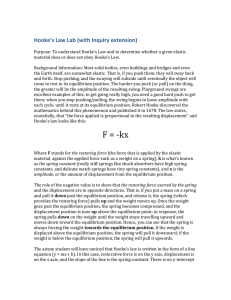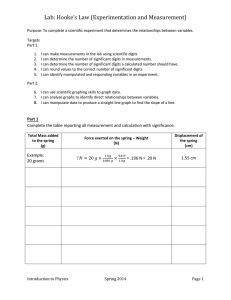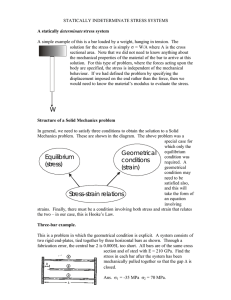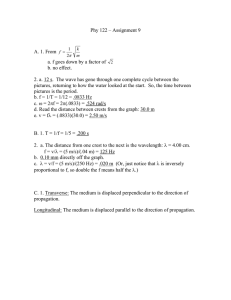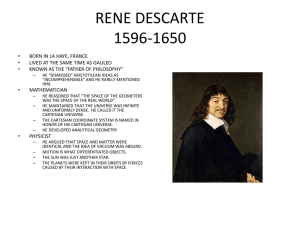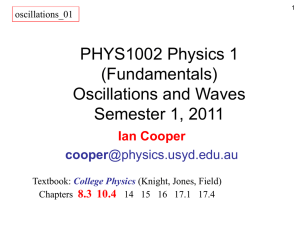Newtonian Mechanics Unit 3 Topic(s): Hooke*s Law
advertisement
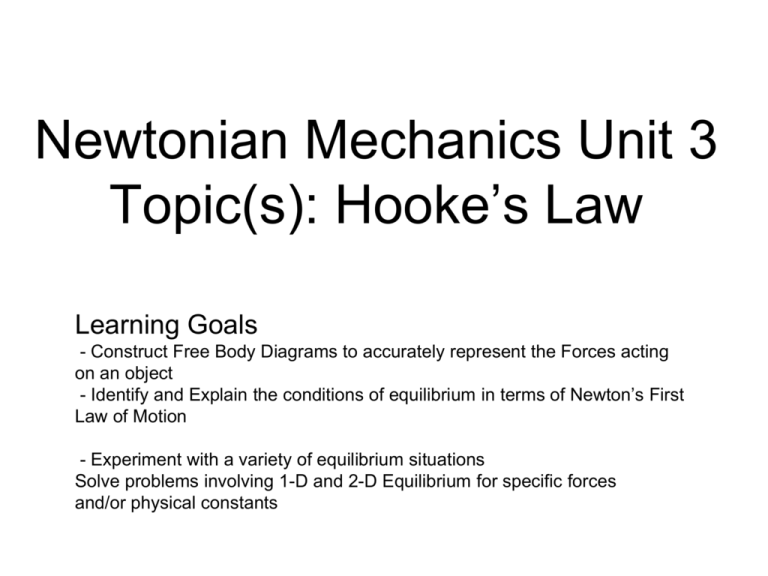
Newtonian Mechanics Unit 3 Topic(s): Hooke’s Law Learning Goals - Construct Free Body Diagrams to accurately represent the Forces acting on an object - Identify and Explain the conditions of equilibrium in terms of Newton’s First Law of Motion - Experiment with a variety of equilibrium situations Solve problems involving 1-D and 2-D Equilibrium for specific forces and/or physical constants HOOKE’S LAW The Parts of Hooke’s Law FS is the restoring spring force [N] k is the spring constant [N/m] x is displacement from equilibrium (unstretched) position [m] The negative sign is directional so that the force points the correct way (back to equilibrium position). Oftentimes we can ignore the negative sign Relationship between F and x There is a direct relationship between Spring force and the distance stretched Direct relationships, when graphed, are linear F=kx follows the format of y=mx+b A material obeys Hooke’s Law if its graph of Force vs. distance is linear. Set up an FBD and calculate “k” A mass of 2.3kg stretches the spring a distance of 0.12m. Calculate k. Spring Constant Misconception The spring constant is constant for a given spring. Different springs will have their own constants based on the metal used to make the spring (think spring in a pen vs. spring used in shock absorbers for a car) A material obeys Hooke’s Law if the ratio of applied force to distance stretched/compressed is a constant. This constant value is the spring constant for that material.
